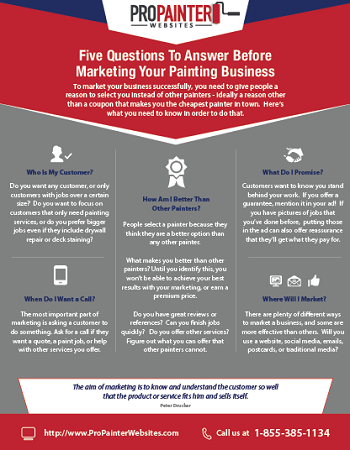Explore The Role Of Seasonal Factors In The Success Of Industrial Exterior Paint And Discover The Most Effective Times To Secure Long Lasting Results For Your Task
Explore The Role Of Seasonal Factors In The Success Of Industrial Exterior Paint And Discover The Most Effective Times To Secure Long Lasting Results For Your Task
Blog Article
Authored By-Burnham Skafte
When you're preparing a business external paint project, seasonal elements can make or break your results. You'll intend to consider just how temperature level and humidity influence paint application and drying out times. Choosing the best season can ensure your paint adheres correctly and lasts much longer. However which seasons are really the very best for this type of job? Let's check out the crucial elements that can impact your task's success.
The Effect of Temperature Level on Paint Application
When you're preparing a business exterior painting task, the temperature level can dramatically affect just how well the paint sticks and dries out.
Preferably, you want to paint when temperatures range in between 50 ° F and 85 ° F. If it's as well chilly, the paint may not treat appropriately, causing problems like peeling off or breaking.
On the other side, if it's also hot, the paint can dry too promptly, preventing appropriate attachment and causing an irregular finish.
You need to likewise consider the moment of day; early morning or late afternoon supplies cooler temperature levels, which can be a lot more favorable.
Always examine the manufacturer's recommendations for the particular paint you're making use of, as they often give guidance on the excellent temperature variety for optimum outcomes.
Humidity and Its Impact on Drying Times
Temperature level isn't the only ecological variable that affects your business external painting project; humidity plays a considerable duty too. High humidity levels can reduce drying times drastically, affecting the total top quality of your paint work.
When the air is saturated with moisture, the paint takes longer to heal, which can result in problems like poor attachment and a greater danger of mildew development. If exterior house painting plymouth on a specifically humid day, be prepared for prolonged delay times between coats.
It's important to keep track of local climate condition and plan appropriately. Ideally, aim for moisture levels in between 40% and 70% for optimum drying.
Keeping these consider mind guarantees your task stays on track and delivers a long lasting surface.
Best Seasons for Commercial Outside Paint Projects
What's the best season for your business external paint tasks?
Springtime and very early autumn are generally your best options. Throughout these periods, temperatures are moderate, and moisture degrees are frequently reduced, creating ideal problems for paint application and drying.
Stay clear of summer season's intense heat, which can cause paint to completely dry too rapidly, resulting in inadequate bond and coating. Similarly, winter's chilly temperatures can impede appropriate drying and curing, risking the durability of your paint work.
Go for visit the following webpage with temperature levels between 50 ° F and 85 ° F for ideal outcomes. Bear in mind to examine the local weather forecast for rain, as damp conditions can spoil your task.
Preparation around these aspects guarantees your paint project runs efficiently and lasts much longer.
Conclusion
In conclusion, preparing your commercial outside painting jobs around seasonal considerations can make a significant distinction in the outcome. By organizing job throughout the ideal temperature levels and humidity levels, you'll guarantee better attachment and drying times. Remember to watch on regional weather prediction and select the right time of year-- springtime and early fall are your best bets. Taking these steps will help you attain a sturdy and professional coating that lasts.
